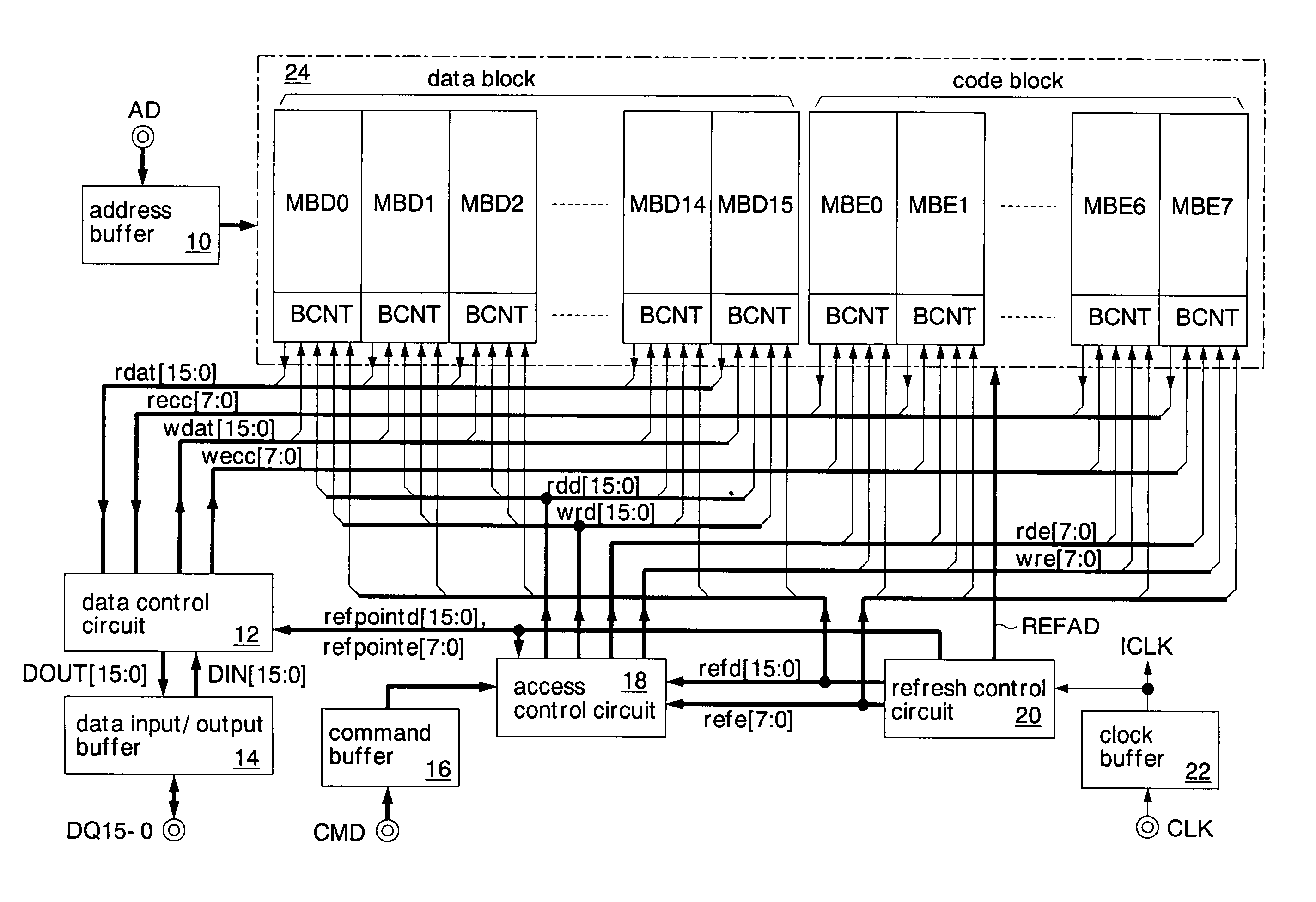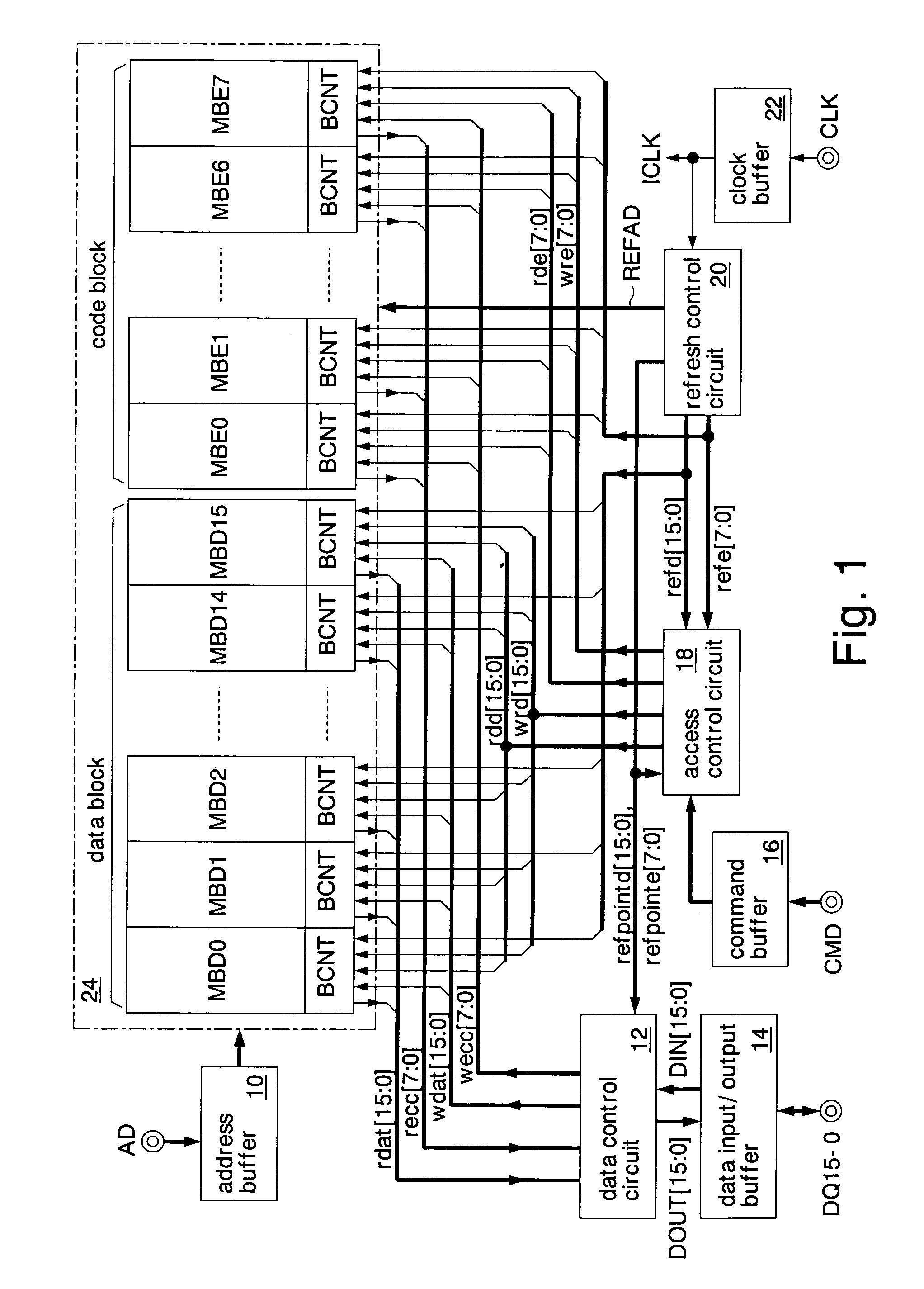Semiconductor memory and method for operating the same
a technology of semiconductors and memory, applied in the field of semiconductor memory, can solve the problems of data loss, large power consumption during a standby period, and difficulty in operating the system in the manner, and achieve the effects of reducing chip size, eliminating defects, and easy operation of error correction circuits
- Summary
- Abstract
- Description
- Claims
- Application Information
AI Technical Summary
Benefits of technology
Problems solved by technology
Method used
Image
Examples
first embodiment
[0054]FIG. 1 shows a semiconductor memory according to the invention. The semiconductor memory is formed on a silicon substrate as a synchronous pseudo SRAM in a clock synchronous type using a CMOS process.
[0055]The pseudo SRAM has an address buffer 10, a data control circuit 12, a data input / output buffer 14, a command buffer 16, an access control circuit 18, a refresh control circuit 20, a clock buffer 22, and a memory core 24.
[0056]The memory core 24 has data blocks MBD0-15, code blocks MBE0-7, and a block control circuit BCNT. The data blocks MBD0-15 are formed corresponding to data terminals DQ15-0, respectively, and hold information data (hereinafter, also simply referred to as data) supplied through the data terminals DQ15-0, respectively. The code blocks MBE0-7 hold each bit of an error correction code in 8 bits generated by the data retained in the data blocks MBD0-15, respectively. The error correction code is used as code data for decoding information data stored in the d...
second embodiment
[0168]The memory core 24B is identical to the memory core 24A of the second embodiment, except that a row redundancy circuit that eliminates defects in a word line and a column redundancy circuit that eliminates defects in a bit line are formed.
[0169]The oscillator 40B self-oscillates a clock signal OSC having a shorter period than in the second embodiment. For this reason, an activation interval of each refresh point signal refpoint [21:0] output by the refresh control circuit 20A and a generation interval of the refresh request signal ref [21:0] are shorter than those in the second embodiment. Specifically, the activation interval T1 of each refresh point signal refpoint [21:0] (corresponding to the refresh interval of each memory cell) is set to be shorter than the data retention time of the worst memory cell. For this reason, all memory cells including the worst memory cell can always hold data by performing the refresh operation. The error correction function of the data contro...
PUM
 Login to View More
Login to View More Abstract
Description
Claims
Application Information
 Login to View More
Login to View More - R&D
- Intellectual Property
- Life Sciences
- Materials
- Tech Scout
- Unparalleled Data Quality
- Higher Quality Content
- 60% Fewer Hallucinations
Browse by: Latest US Patents, China's latest patents, Technical Efficacy Thesaurus, Application Domain, Technology Topic, Popular Technical Reports.
© 2025 PatSnap. All rights reserved.Legal|Privacy policy|Modern Slavery Act Transparency Statement|Sitemap|About US| Contact US: help@patsnap.com



